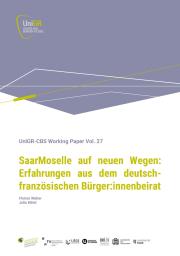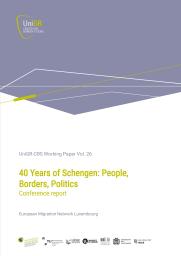Working Paper Vol. 27

As part of the “Common Ground SaarMoselle” project funded by the Robert Bosch Foundation, a cross-border citizens’ advisory council was set up in a pilot phase in the Eurodistrict SaarMoselle in 2024. The aim is to actively involve citizens from Germany and France in the development of future perspectives for the shared border region. In a one-year process, the advisory council consisting of 40 people developed recommendations on key topics in plenary and in-depth meetings. The European Studies working group at Saarland University supported the project with quantitative and qualitative surveys. As the surveys show, the participants of the advisory council rate life in the border region very positively and see personal and social opportunities in the proximity to the neighbouring country. Cooperation is perceived as Europe in action, with the idea of the border region as a “living lab of European integration” meeting with broad approval. At the same time, events such as the Covid-19 pandemic or the reintroduction of border controls in 2024 show that open borders cannot be taken for granted. The work in the advisory council is experienced as enriching in terms of content and interpersonal relationships. The respectful atmosphere, the functioning multilingualism and the opportunity to contribute one’s own ideas are particularly emphasised. A wish was expressed for greater involvement of younger participants. The concrete influence that the work of the advisory council can have on political decisions seems a little too vague. The majority of members expressed their willingness to participate in a cross-border citizens’ advisory council in the future. In this light, the advisory council can be seen as an innovative instrument for more citizen participation in border regions.




